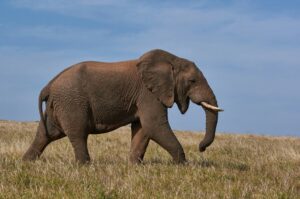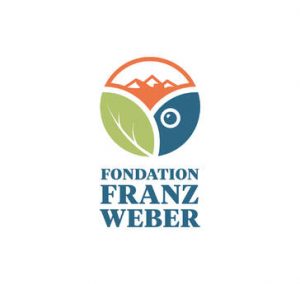Johannesburg – The hunting of two huge elephants in Tanzania has ignited protest from the online publication, Africa Geographic, suggesting that Tanzania should not hunt elephants that move from Kenya into its territory because they are “so friendly to humans and don’t have an instinct to run away from hunters”.
This article was originally published on The Bulrushes.
Late last year the two very old elephant bulls were hunted separately in hunting blocks, 24 and 36 kilometres from Tanzania’s border with the neighbouring Amboseli National Park in Kenya.
This raises many questions, such as:
- Is Kenya a big threat to Tanzania’s hunting industry?
- Who owns elephants and other types of wildlife that move from Kenya into Tanzania?
- Does Kenya, together with the anti-international hunting movement have legal rights to dictate to Tanzania how it should hunt its wildlife?
“If they [elephants and other wildlife] are in Tanzania they belong to Tanzania, there’s no mechanism anywhere as far as I know for owning wildlife that’s not within your borders,” said UK-based Profssor Adam Hart of the University of Gloucestershire.
Responding to the question of whether or not Kenya is a big threat to Tanzania’s international hunting industry because it’s a non-hunting neighbour, Professor Hart said that “at least the implication is there”.
“Is it [Kenya] a threat?” asked Professor Hart.
“Well that is a lot to unpack, but Europe using Kenya and Kenyans to support bans is clearly ill-informed, and seems to strengthen the case.”
Professor Hart said that “Tanzania uses hunting as part of its conservation toolbox” in contrast to its neighbour Kenya, which banned hunting in the late 1970s.
He continued: “Hunting is, of course, controversial, but there is no denying that many nations with successful conservation records make use of sustainable, regulated hunting to achieve those results.
“International pressure on hunting, from Europe especially, frequently cites Kenya as an example of conservation success achieved without hunting.
“Given the near 70% decline in wildlife in Kenya over the last decades, it is hard to see how Kenya is in any position to be used as an example.”
The truth is that international hunting revenue supports life-changing socio-economic benefits that incentivise wildlife conservation in Tanzania.
“The hunting community residents from Tanzania who used to be poachers but no longer poach because they are now enjoying the socio-economic benefits from hunting include the Waikoma, Wakurya, Waisenyi, Wananta and Wangoreme tribes that border the Ikorongo/Gurumeti Game Reserve in the western part of Serengeti National Park,” said Tanzanian citizen Dr. Ladislaus Kahana, senior lecturer at College of African Wildlife Management Mweka in a recent interview.
Reacting to Africa Geographic’s protest that the hunting of the two “super tuskers” was an irresponsible act, under the watch of the Tanzanian Government and the Tanzania Hunting Operators Association (TAHOA) Chairman, Michel Mantheakis, denounced the protest as “poorly informed about the way the hunting industry works in Africa, especially in Tanzania.”
Mantheakis said in a January 2024 letter to Africa Geographic, “The anti-hunting movement constantly demonises international hunting to discourage hunters from coming to Africa.”
He denounced disinformation campaigns aimed at cheating the world into believing that legal international hunting causes the decline in African wildlife.
Yet, the real causes include the exploding human population growth, increasing poverty and inequality that “compel people to engage in poaching and other illegal activities for quick financial relief.”
He said that all hunting activities in Tanzania are conducted following the Wildlife Conservation Act and Managed by the Tanzania Wildlife Management Authority (TAWA).
Every hunter must be accompanied by qualified and licenced professional hunters and supervised by TAWA wildlife rangers.
“The Tanzania Tourist Hunting industry is 130 years old, and it has been well-regulated throughout its existence,” said Mr Mantheakis.
“It [international hunting] is recognised as the only viable land use in game reserves and areas with wildlife outside the national parks and the Ngorongoro Conservation Area.
“The hunting industry plays the main role in funding the conservation of wildlife resources outside of national parks in Tanzania.
“Hunting concessions currently comprise 260 677 square kilometres which is 29% of Tanzania’s surface area, hence a much larger area than the 113 621 square kilometres that national parks cover which is only 12% of Tanzania’s surface area.
“As in all southern African countries, most of the wildlife and wildlife habitat in Tanzania is found in the hunting areas, outside of the national parks.”
He said that out of Tanzania’s 21 national parks in which hunting is not permitted, only five of them get enough visitors to be profitable, making it difficult to adequately fund the operational costs of the remaining 16 poorly visited national parks.
“Therefore, the notion to substitute hunting with photographic safaris is currently not a viable option in the foreseeable future,” said Mantheakis.
“The removal of legal hunting will only result in the demise of all wildlife outside of the existing national parks.”
Mantheakis said that in Tanzania the Convention on International Trade in Endangered Species of Wild Fauna and Flora (CITES) hunting quota is only 50 elephants annually out of a population of over 60 000 elephants – “only 0.08% of a stable and growing population.”
He said that 17 people, including children, were killed by elephants and 36 injured in the last eight years in Longido District alone, near the concessions, where the two elephants were hunted.
Only 29 elephants were hunted from July 2018 to December 2023, but during the same period “240 Tanzanians were killed by elephants.”
Mantheakis explained that there was no wrongdoing in burning or burying the two elephants’ carcasses because they were hunted in communities where “carcass burning is a very responsible conservation act” to prevent non-elephant-meat-eating pastoral people from “poisoning the carcasses [and use them as bait], to kill lion, leopard, and hyena that frequently prey on their livestock”.
About the writer: Emmanuel Koro is a Johannesburg-based international award-winning journalist who writes independently on environmental and developmental issues in Africa.



